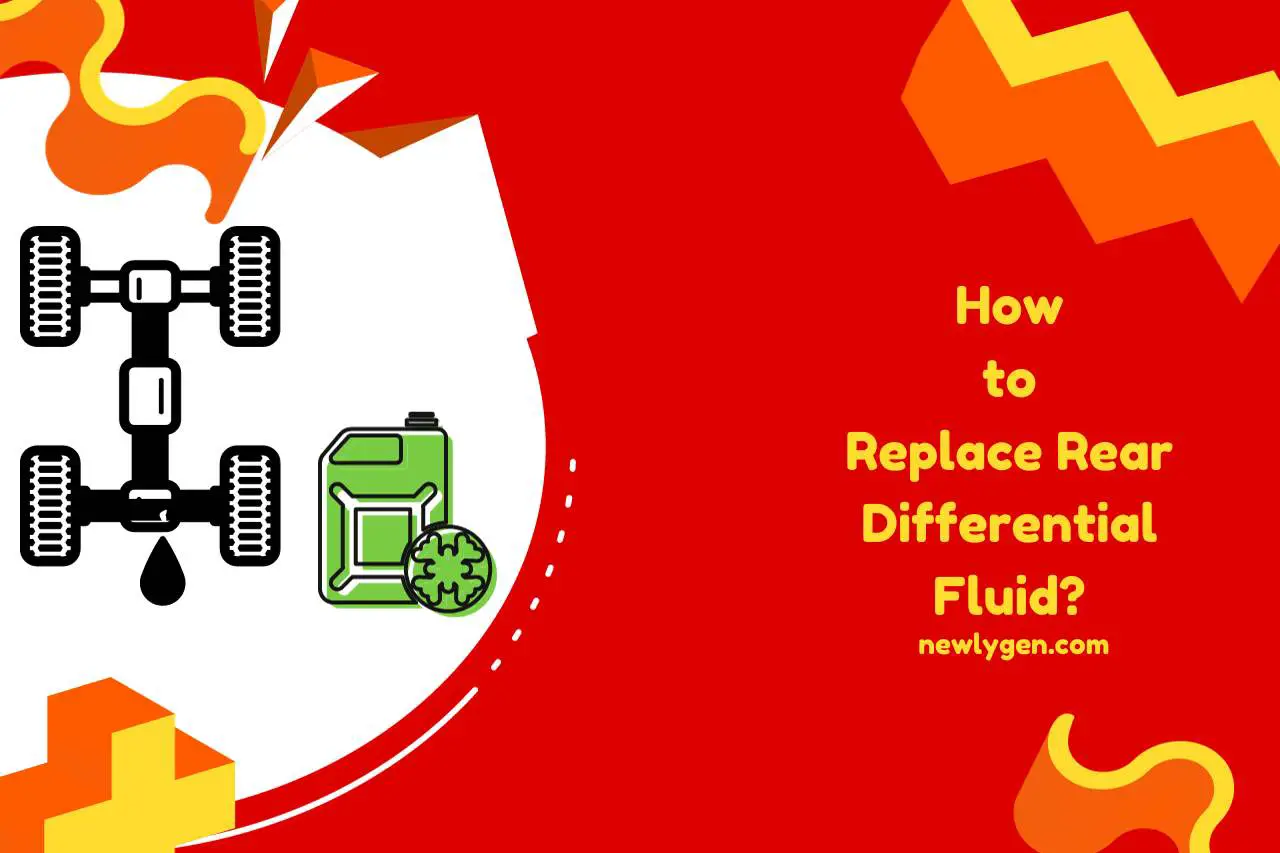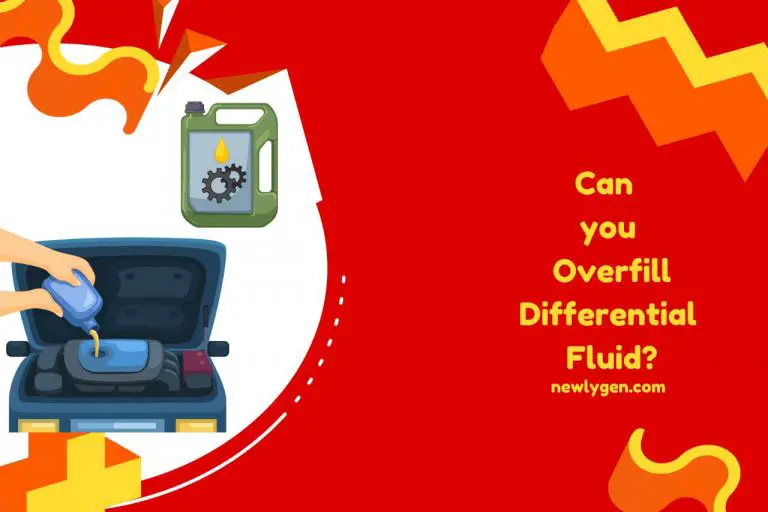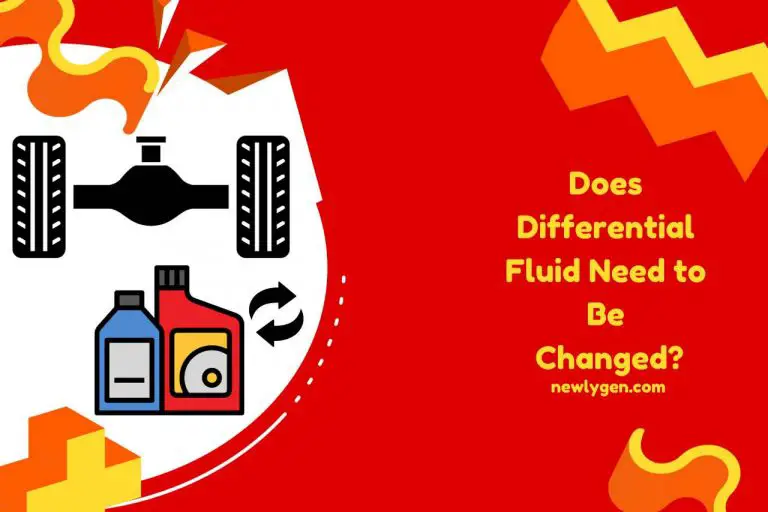How to Replace Rear Differential Fluid? Mastering Vehicle Maintenance!
Have you ever wondered how to replace rear differential fluid and why it’s so vital for your vehicle’s health? Today, our discussion focuses on the steps for a seamless fluid change, the risks of neglect, and the specifics to consider for optimal performance. Moreover, you will learn the intricacies of differential fluid types, quantities, and the nuances of ensuring your vehicle runs smoothly by the end of this blog post. If you are a driver who cares about your own safety and your vehicle’s health, this guide is for you!
Can you Change Differential Fluid Yourself?
Yes, you can change differential fluid yourself if you have gathered the right tools and knowledge. While it’s a manageable task for most DIY enthusiasts, it’s crucial to ensure accuracy for your vehicle’s longevity. These are the key points that you need to keep in mind.
- Safety First: Always use jack stands when working under your vehicle.
- Right Equipment: Procure the recommended fluid and a fluid pump.
- Follow Guidelines: Each vehicle has specific fluid requirements; thus, always consult the owner’s manual.
- Cleanliness: Ensure the differential area is clean to avoid contaminants.
In order to maintain the drivability and lifespan of your vehicle’s rear differential, paying attention to these things is crucial.
How to Replace Rear Differential Fluid?
The most efficient way to replace rear differential fluid is to follow a systematic, step-by-step process that is able to ensure the longevity and performance of your vehicle. We assure you that you will easily replace the fluid with our detailed guide.
-
Preparation
- Safety Measures: First of all, wear gloves and safety glasses to prevent any accidental splashes.
- Vehicle Elevation: Using a hydraulic jack, carefully lift the rear of the vehicle and secure it on jack stands for stability.
- Gathering Supplies: Have on hand the appropriate differential fluid (usually found in the vehicle’s manual), a catch pan, a fluid pump, and a set of wrenches.
-
Draining the Old Fluid
- Locate the Drain Plug: This is often found at the bottom of the differential.
- Place the Catch Pan: Now, position it beneath the drain plug to collect the old fluid.
- Remove the Plug: Using the appropriate wrench, unscrew the plug. Allow the fluid to drain completely.
-
Removing the Differential Cover (if applicable)
- Some vehicles require you to remove the differential cover to access and clean the interior. If your model has such a cover, use a flat-head screwdriver or a pry bar to gently break the seal.
- Clean the interior using a lint-free cloth.
-
Refilling the Differential
- Locate the Fill Plug: Usually, you can find it higher up on the differential case.
- Insert the Fluid Pump: Pour the new fluid in, ensuring you don’t overfill. Most vehicles have a fill line, or you can refer to the owner’s manual for the correct amount.
- Replace the Fill Plug: Once filled, secure the plug back into its position.
-
Finalizing
- Reattach the Differential Cover: If you removed the cover, ensure it is cleaned and properly sealed when putting it back.
- Check for Leaks: Once everything is reassembled, start the vehicle and let it run for a few minutes. If there is any leakage, you can identify them now.
- Lower the Vehicle: Carefully remove the jack stands and lower the vehicle. In case you cannot do it alone, ask for some help ensuring your own safety.
-
Disposal of Old Fluid
- It’s crucial to remember that differential fluid is hazardous waste. Always dispose of it at a local auto parts store or recycling facility that accepts such fluids.
Remember, while this task is doable for many, if you ever feel unsure, there’s no harm in seeking professional help to ensure the job is done right.
What If you Don’t Change Differential Oil?
Neglecting to change differential oil can lead to severe mechanical issues, impairing your vehicle’s performance and lifespan. Consequently, those severe situations can be harmful to your own safety. Thus, have a look at these potential consequences.
- Increased Friction: Old and degraded oil loses its lubricating properties. Over time, this causes increased friction between gears, leading to excessive wear.
- Overheating: Without fresh lubrication, the differential can overheat, compromising the integrity of surrounding components. It can be dangerous to neglect overheating issues.
- Noisy Operation: As the lubrication deteriorates, you might notice a whining or grinding noise, especially when you take turns.
- Decreased Fuel Efficiency: Poor lubrication in the differential can create a drag in the drivetrain, reducing the vehicle’s overall fuel efficiency.
- Potential Breakdown: In extreme cases, old differential oil can lead to total gear failure, rendering the vehicle immobile.
In essence, while it might seem like a minor upkeep task, timely differential oil replacement is pivotal. Remember that preventive maintenance will save you from costly repairs.



FAQ
How Long does It Take to Replace Differential Fluid?
The time it takes to replace differential fluid typically ranges from 30 minutes to an hour, depending on the vehicle’s make, model, and the tools and previous knowledge you have.
This duration can vary based on the ease of accessing the differential and the individual’s familiarity with the process.
Always ensure to allocate some extra time for unforeseen challenges and to verify the job’s completion without any leaks or issues.
What Oil Do I Put in My Rear Differential?
The oil you should put in your rear differential largely depends on your vehicle’s make and model.
It’s best to consult your vehicle’s owner manual for the specific type and quantity of differential oil.
Typically, most vehicles use a GL-5-rated gear oil, but viscosities and specifications can vary.
It would always be better to prioritize manufacturer-recommended lubricants if you want to achieve the best performance.
How Much Fluid is in a Rear Differential?
The amount of fluid in a rear differential also varies based on the vehicle’s make and model. Typically, a standard passenger vehicle may contain between 1 and 3 quarts of differential fluid.
However, larger vehicles or trucks might require more. To determine the exact quantity for your vehicle, it’s a must to check your owner’s manual. Or else, go through the vehicle manufacturer’s guidelines online.
Watch this one,
Video Credits – ChrisFix
You May Also Like
- Can Bad Differential Fluid Cause Vibration? Unveiling the Truth!!!
- Can you Overfill Differential Fluid? Understanding the Basics!
- How Often to Change Differential Fluid? Understanding Your Car!
- Is Differential Fluid Flammable? Unmasking Myths!
- Does Differential Fluid Need to be Changed? Ensuring Your Car’s Health!
- Cost to Change Differential Fluid – (DIY vs Professional Services)
- What Color is Differential Fluid? Decoding the Shades!
- What does Differential Fluid Smell Like? Unraveling the Mystery!







